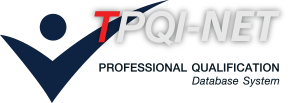หน่วยสมรรถนะ
Test and troubleshoot aircraft hydro-mechanical, gaseous and landing gear.
สาขาวิชาชีพการบิน
รายละเอียดหน่วยสมรรถนะ
| 1. รหัสหน่วยสมรรถนะ | AVT-RWBI-229A |
| 2. ชื่อหน่วยสมรรถนะ | Test and troubleshoot aircraft hydro-mechanical, gaseous and landing gear. |
| 3. ทบทวนครั้งที่ | / |
| 4. สร้างใหม่ |
|
ปรับปรุง |
|
| 5. สำหรับชื่ออาชีพและรหัสอาชีพ (Occupational Classification) | |
|
7232 Aircraft engine mechanics and fitters |
|
| 6. คำอธิบายหน่วยสมรรถนะ (Description of Unit of Competency) | |
| This unit of competency employs hand skills, standard trade practices, and systems knowledge to test and troubleshoot the aircraft hydro-mechanical, mechanical, gaseous and landing gear systems and components of fixed wing aircraft during the scheduled or unscheduled maintenance. This work may be carried out individually or as part of a team. | |
| 7. สำหรับระดับคุณวุฒิ |
| 1 | 2 | 3 | 4 | 5 | 6 | 7 | 8 |
|---|---|---|---|---|---|---|---|
| 8. กลุ่มอาชีพ (Sector) | |
| 10 Aircraft Mechanics | |
| 9. ชื่ออาชีพและรหัสอาชีพอื่นที่หน่วยสมรรถนะนี้สามารถใช้ได้ (ถ้ามี) | |
| 102 Aircraft Mechanics: Helicopter | |
| 10. ข้อกำหนดหรือกฎระเบียบที่เกี่ยวข้อง (Licensing or Regulation Related) (ถ้ามี) | |
| ICAO Doc 7192 / EASA Part 66 | |
| 11. สมรรถนะย่อยและเกณฑ์การปฏิบัติงาน (Elements and Performance Criteria) |
| หน่วยสมรรถนะย่อย (EOC) | เกณฑ์ในการปฏิบัติงาน (Performance Criteria) | รหัส PC (ตามเล่มมาตรฐาน) |
รหัส PC (จากระบบ) |
|---|---|---|---|
| 101411.01 Test hydro-mechanical, mechanical, gaseous and landing gear systems and components. |
101411.01.01 The aircraft and hydro-mechanical, mechanical, gaseous and landing gear systems are correctly prepared according to specified procedures for the application of power. |
101411.01.01 | 199360 |
| 101411.01 Test hydro-mechanical, mechanical, gaseous and landing gear systems and components. |
101411.01.02 Power is applied and system and components functionally tested according to specified procedures for indication of malfunction or leaks while applying all relevant work health and safety (WHS) procedures. System calibration or adjustments are carried out according to specified procedures. |
101411.01.02 | 199361 |
| 101411.02 Troubleshoot hydro-mechanical, mechanical, gaseous and landing gear systems and components. |
101411.02.01 Relevant maintenance documentation and modification status, including system defect/service difficulty reports, where appropriate, are interpreted to identify an unserviceability. Available information from maintenance documentation and inspection and test results is employed, where necessary, to assist in fault determination. |
101411.02.01 | 199362 |
| 101411.02 Troubleshoot hydro-mechanical, mechanical, gaseous and landing gear systems and components. |
101411.02.02 Maintenance manual fault diagnosis guide and logical processes are employed to ensure efficient and accurate troubleshooting to line replacement level. Specialist advice is acquired, where required, to assist with the troubleshooting process. Hydro-mechanical, mechanical, gaseous and landing gear system and component faults are located and the causes of the faults are clearly identified and correctly recorded in maintenance documentation, where required. Fault rectification requirements are determined to support in planning the repair or adjustment. |
101411.02.02 | 199363 |
| 12. ความรู้และทักษะก่อนหน้าที่จำเป็น (Pre-requisite Skill & Knowledge) | |
|
101409 Inspect aircraft hydro-mechanical, mechanical, gaseous and landing gear systems and components |
|
| 13. ทักษะและความรู้ที่ต้องการ (Required Skills and Knowledge) | |
|
(ก) ความต้องการด้านทักษะ See Appendix A (ข) ความต้องการด้านความรู้ See Appendix A |
|
| 14. หลักฐานที่ต้องการ (Evidence Guide) | |
|
(a) Performance Evidence (b) Knowledge Evidence (c) Assessment recommendation |
|
| 15. ขอบเขต (Range Statement) | |
|
(a) Recommendation (b) Description |
|
| 16. หน่วยสมรรถนะร่วม (ถ้ามี) | |
| N/A | |
| 17. อุตสาหกรรมร่วม/กลุ่มอาชีพร่วม (ถ้ามี) | |
| N/A | |
| 18. รายละเอียดกระบวนการและวิธีการประเมิน (Assessment Description and Procedure) | |
|
• The assessment are based on combination of paper exams, interviewing, and practical demonstrations depending on the assessors’ judgement. |
|
